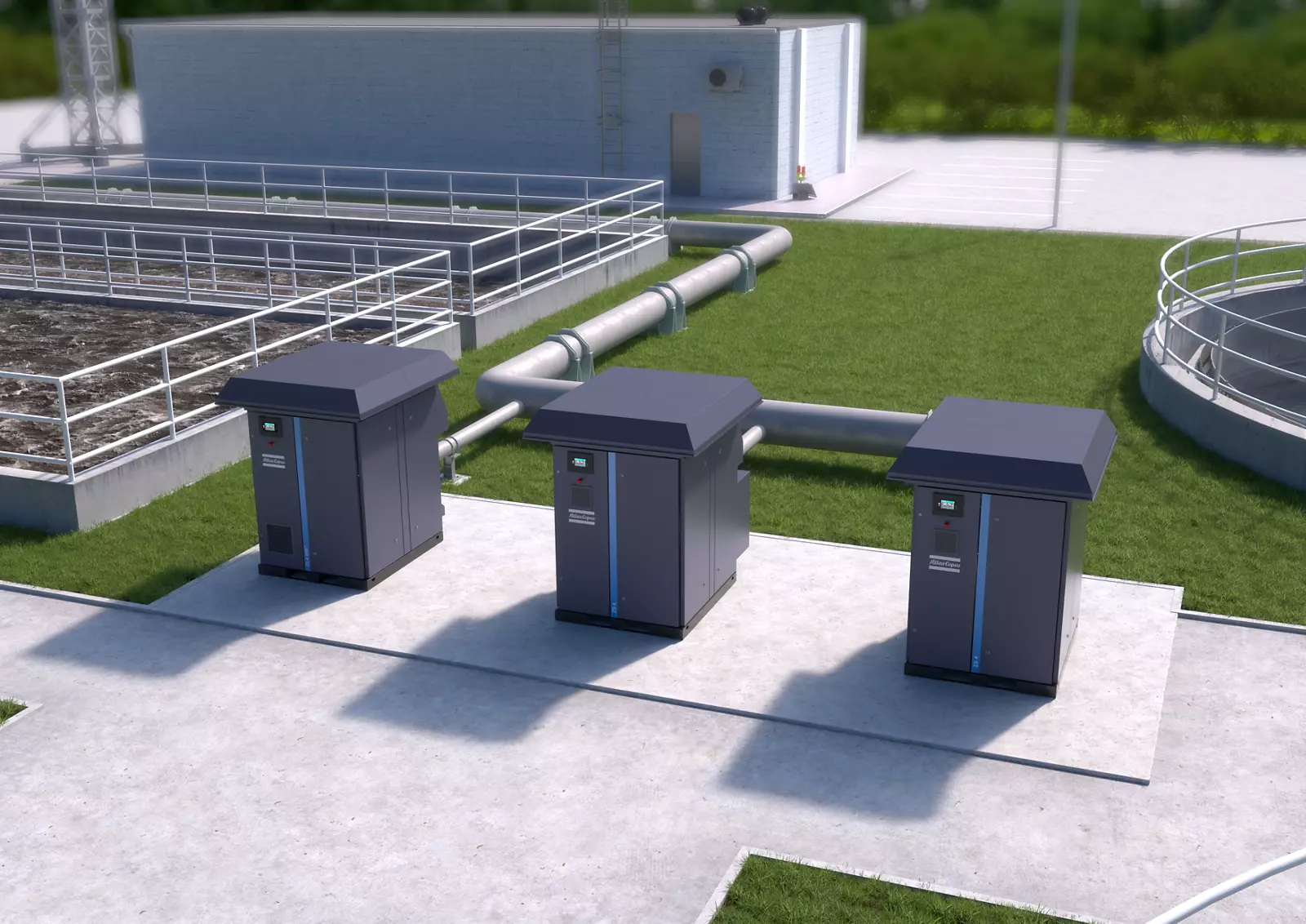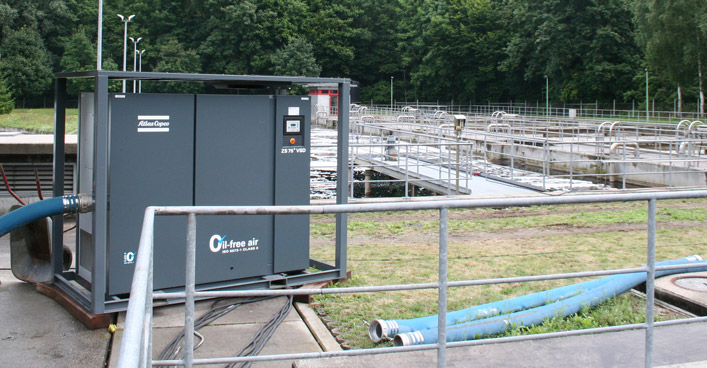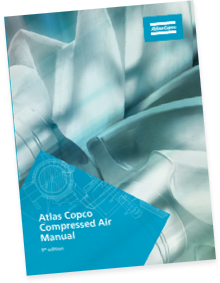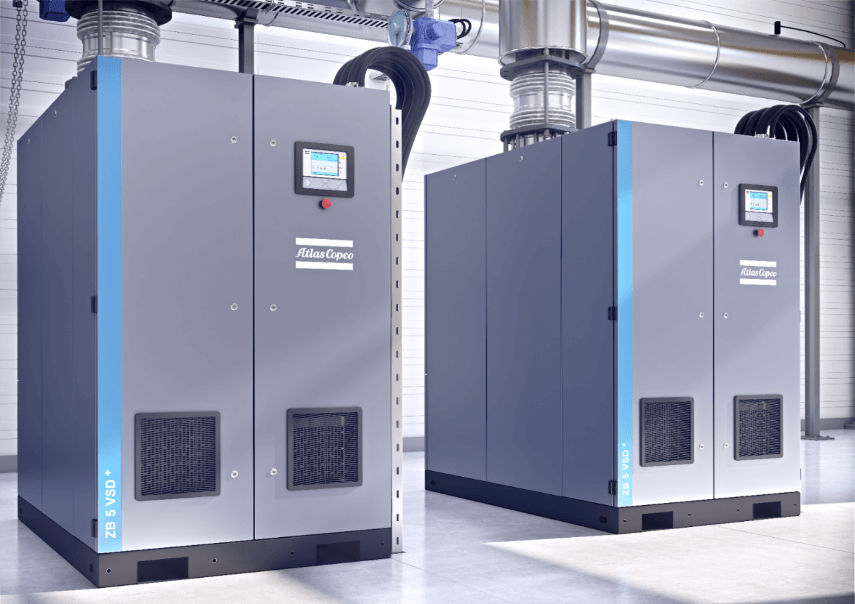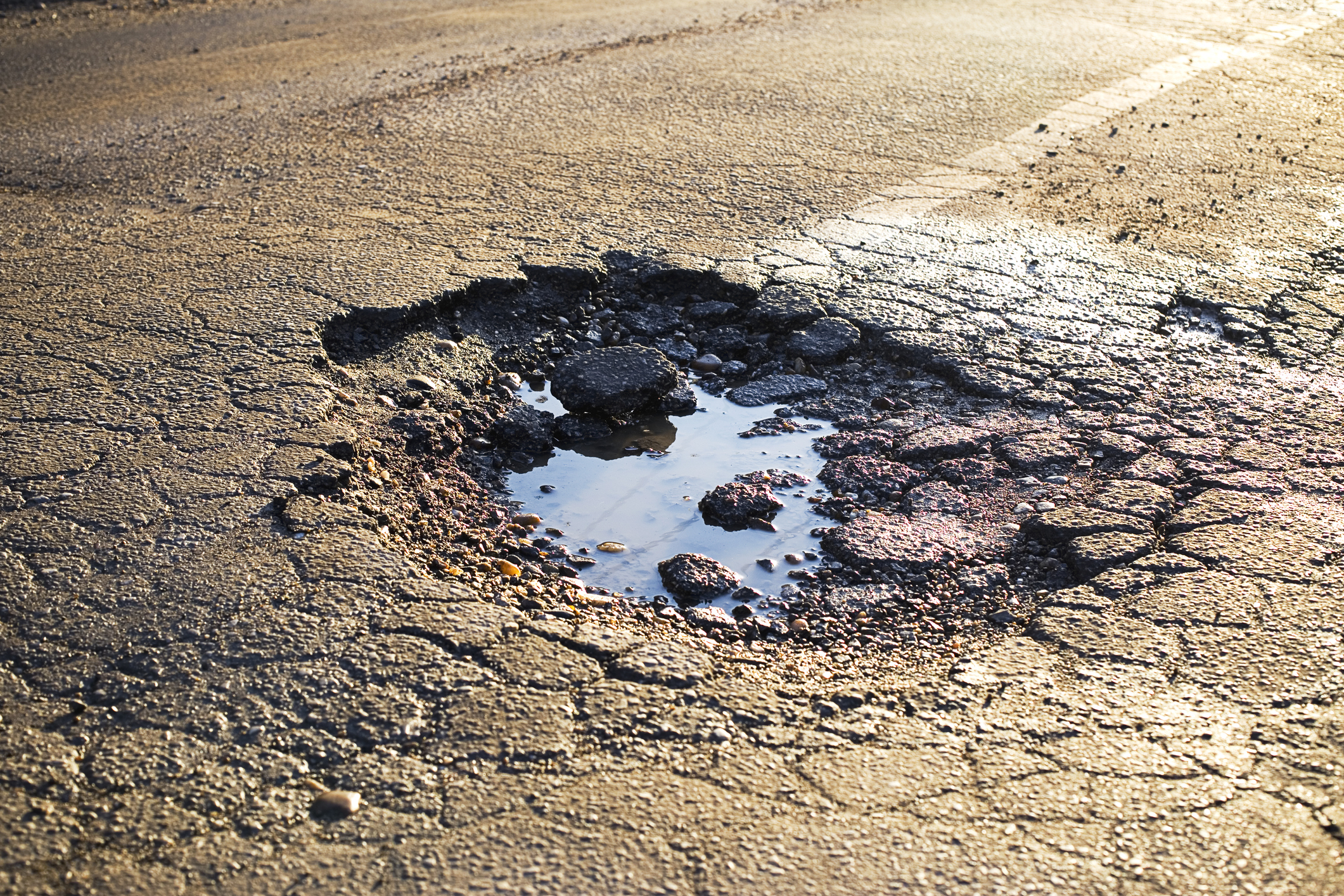The following is an excerpt from the article Advancements in Aeration by Travis McGarrah, product marketing manager for blowers with Atlas Copco Compressors. The full version can be read online or in the October issue of Water and Wastes Digest.
A review of blowers and their uses in wastewater treatment plants
For several decades, lobe and multistage blowers were the tried-and-true blower technologies for wastewater treatment plants. Over the past 15 years, the demand for increased energy efficiency has led to major advances in aeration equipment. Single-stage integrally geared centrifugal blowers, positive displacement screw blowers and high-speed direct-drive centrifugal blowers can greatly reduce a plant’s power consumption.
Prior to the 1950s, untreated wastewater was regularly released to U.S. rivers and lakes. The Clean Water Act of 1972 set firm treatment requirements. Wastewater treatment requires aeration of treatment basins, and blowers provide the air to meet this demand.
Making Improvements
When the U.S. began implementing wastewater treatment plants in the 1950s, the lobe blower was the most common technology used to move air. The original lobe blower had two counter rotating shafts with lobes that move air from one side of a casing to another. Improvements have been made to this design over time, but the operating principle remains the same.
Multistage centrifugal blowers have a simple design concept. Air is accelerated and diffused in multiple stages, meaning that higher pressures are achievable by adding additional “stages” to a machine. In addition, impeller designs can be more backward curved (less pressure rise, more efficient) or more radial (more pressure rise, less efficient). These factors suggest that a multistage centrifugal machine could be created with thousands of possible combinations. The final outcome is a more efficient blower to run a given design point. The advantages of multistage blowers are offset by a higher cost than a lobe blower, as well as some performance considerations. The flow from a multistage machine—or any centrifugal machine—changes with the machine discharge pressure, meaning a process with pressure fluctuation delivers different flows.
Keep Reading…
Don’t stop now. You can read the full article online in Water and Wastes Digest, and stay up-to-date on all Atlas Copco news by subscribing to our weekly newsletter.

